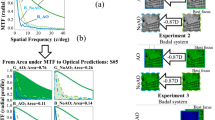Abstract
The double-pass technique used in ophthalmology for the measurement of point spread function was first proposed by Flamant in 1956 [1]. The design principle is after several reflections, the point light source is imaged on the retina after passing through the refractive medium, the retina image is then reflected, and the light is returned through the original path where the acquisition system collects and analyzes the double-pass light to obtain the light energy distribution of the retinal imaging. Subsequently, in 1994, Westheimer et al. [2] proposed a way to analyze the light energy distribution of double-pass images to investigate the combined effects of aberrations and intraocular scatter on retinal image quality. The current available optical visual quality analysis system (OQAS II) based on the double-pass principle design is produced in Spain. The schematic diagram is shown in Fig. 2.1. The point light source passing through the refractive medium of the human eye to reach the retina is the first pass and together with the light that is reflected from the retina and collected forms the double-pass system. By analyzing the imaging shape and light energy distribution of the point light source on the retina, the combined effect of ocular aberrations and intraocular scatter on the optical quality of the human eye can be obtained.
Access this chapter
Tax calculation will be finalised at checkout
Purchases are for personal use only
Similar content being viewed by others
References
Flamant F. Distribution of light in the retinal image. Arch Ophtalmol Rev Gen Ophtalmol. 1956;16(1):54–66.
Westheimer G, Liang J. Evaluating diffusion of light in the eye by objective means. Invest Ophthalmol Vis Sci. 1994;35(5):2652–7.
Shizuka K, Naoyuki M, Chikako I, et al. Ocular forward light scattering and corneal backward light scattering in patients with dry eye. Invest Ophthalmol Vis Sci. 2014;55(10):6601–6.
de Waard PW, IJspeert JK, van den Berg TJ, et al. Intraocular light scattering in age-related cataracts. Invest Ophthalmol Vis Sci. 1992;33(3):618–25.
Qiao L, Wan X, Cai X, et al. Comparison of ocular modulation transfer function determined by a ray-tracing aberrometer and a double-pass system in early cataract patients. Chin Med J. 2014;127(19):3454–8.
Henault F. Strehl ratio: a tool for optimizing optical nulls and singularities. J Opt Soc Am A Opt Image Sci Vis. 2015;32(7):1276–87.
Iskander DR. Computational aspects of the visual Strehl ratio. Optom Vis Sci. 2006;83(1):57–9.
Tan CH, Labbe A, Liang Q, et al. Dynamic change of optical quality in patients with dry eye disease. Invest Ophthalmol Vis Sci. 2015;56(5):2848–54.
Yu AY, Lu T, Pan AP, et al. Assessment of tear film optical quality dynamics. Invest Ophthalmol Vis Sci. 2016;57(8):3821–7.
Chen-Chen X, Ting X, Qin-Mei W, et al. Repeatability and reproducibility of a double-pass optical quality analysis device. PLoS One. 2015;10(2):e0117587.
Tomas J, Pinero DP, Alio JL. Intra-observer repeatability of optical quality measures provided by a double-pass system. Clin Exp Optom. 2012;95(1):60–5.
Saad A, Saab M, Gatinel D. Repeatability of measurements with a double-pass system. J Cataract Refract Surg. 2010;36(1):28–33.
Author information
Authors and Affiliations
Corresponding author
Editor information
Editors and Affiliations
Rights and permissions
Copyright information
© 2021 People's Medical Publishing House, PR of China
About this chapter
Cite this chapter
Wang, QM. (2021). Optical Visual Quality Analysis Based on Double-Pass Technology. In: Yu, AY. (eds) Double-pass Optical Quality Analysis for the Clinical Practice of Cataract. Springer, Singapore. https://doi.org/10.1007/978-981-16-0435-5_2
Download citation
DOI: https://doi.org/10.1007/978-981-16-0435-5_2
Published:
Publisher Name: Springer, Singapore
Print ISBN: 978-981-16-0434-8
Online ISBN: 978-981-16-0435-5
eBook Packages: MedicineMedicine (R0)




